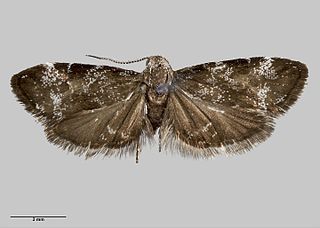
Asterivora tristis is a species of moth in the family Choreutidae. It is endemic to New Zealand and has been observed in Tongariro National Park. Adults of this species are on the wing in January.
Phaeosaces lindsayae is a species of moth in the family Depressariidae. It is endemic to New Zealand. It is classified as "Data Deficient" by the Department of Conservation.

Trachypepla semilauta is a moth of the family Oecophoridae and was first described by Alfred Philpott in 1918. It is endemic to New Zealand and has been collected in Southland. This species inhabits southern beech forest on the side of mountains. Adults are on the wing in January.
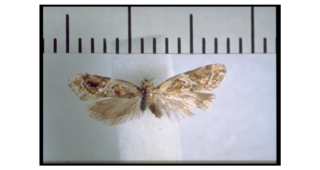
Trachypepla roseata is a species of moth in the family Oecophoridae. This species is endemic to New Zealand and is found in the Nelson and Tasman regions of the South Island. It frequents forest habitat and is on the wing in January. It is classified as "Data Deficient" by the Department of Conservation.

Archyala opulenta is a species of moth of the family Tineidae. This species is endemic to New Zealand has been found in the upper Maitai Valley in Nelson as well as in Northland. The larvae of this species are associated with endemic bat species as they feed on the guano of Mystacinidae. The adult moths are on the wing in November. It is classified as "Data Deficient" under the New Zealand Threat Classification System by the Department of Conservation.
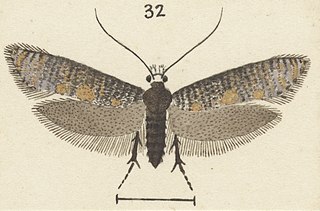
Archyala lindsayi is a species of moth in the family Tineidae. This species is endemic to New Zealand. It is classified as "At Risk, Naturally Uncommon" by the Department of Conservation.

Epichorista tenebrosa is a species of moth in the family Tortricidae. This species is endemic to New Zealand. It is found in Otago and has been collected in tussock grassland habitats. It is a late autumn emerging moth and adults are on the wing in February. It is classified as "At Risk, Relict'" by the Department of Conservation.

Anisoplaca fraxinea is a species of moth of the family Gelechiidae. It was described by Alfred Philpott in 1928 and is endemic to New Zealand. It has been observed in the South Island and adults are on the wing in February and March.

Hierodoris stella is a species of moth in the family Oecophoridae. This species is endemic to New Zealand and occurs in Auckland, Taranaki, Hawkes Bay, Bay of Plenty and Wellington. As at 2005 the larvae of this species is unknown as is its host plant. The adult moth frequents forest and are on the wing in January and February. It is classified as "At Risk, Relict'" by the Department of Conservation.
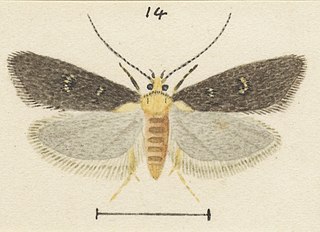
Trachypepla cyphonias is a species of moth in the family Oecophoridae. It is endemic to New Zealand and has been collected in Wellington and Taranaki. Larvae of this species have been reared from kānuka leaf litter. Adults are on the wing in December. This species is classified as "At Risk, Naturally Uncommon" by the Department of Conservation.

Archyala culta is a species of moth in the family Tineidae. This species is endemic to New Zealand. It is classified as "Data Deficient" by the Department of Conservation. This species has only been collected at Opoho and is only known from its type specimen.
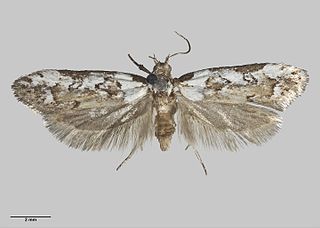
Trachypepla festiva is a moth of the family Oecophoridae and was first described by Alfred Philpott in 1930. It is endemic to New Zealand and has been collected in the northern parts of the North Island.

Tingena clarkei is a species of moth in the family Oecophoridae. It is endemic to New Zealand and has been observed in the North and South Island. This species is on the wing from November until February and inhabits open scrubland or native forest. This species is similar in appearance to Trachypepla photinella.
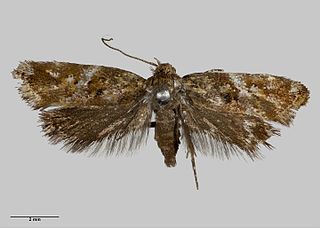
Tingena eumenopa is a species of moth in the family Oecophoridae. It is endemic to New Zealand and found in the North and South Islands. The adults have been found amongst tree ferns and are on the wing in December.
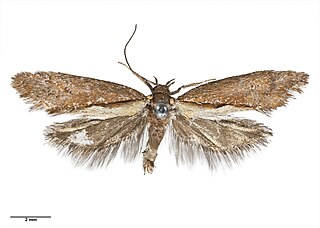
Tingena laudata is a species of moth in the family Oecophoridae. It is endemic to New Zealand and has been observed in Fiordland and Otago. Adults of this species are on the wing in January.
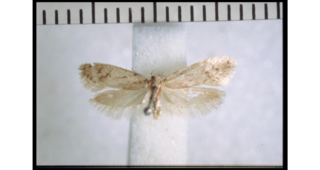
Tingena pallidula is a species of moth in the family Oecophoridae. It is endemic to New Zealand and has been collected in the Nelson and Tasman regions. Adults of this species are on the wing in February and have been collected by beating undergrowth.
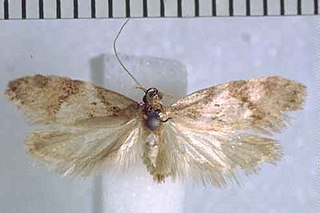
Trachypepla angularis is a species of moth in the family Oecophoridae. It is endemic to New Zealand and has been collected at Lake Rotoroa in the Nelson Lakes National Park in January. This species inhabits mixed native forest.

Trachypepla leucoplanetis is a moth of the family Oecophoridae first described by Edward Meyrick in 1883. It is endemic to New Zealand and has been collected in both the North and South Islands. It is the smallest moth species in the genus Trachypepla and the patterns on the forewings of adults are variable in appearance. It inhabits native forest and bush and the larvae feed on leaf litter. Adults are on the wing from October until February. T. leucoplanetis is regarded as being rarely observed and has been collected via the beating of foliage.

Trachypepla minuta is a moth of the family Oecophoridae first described by Alfred Philpott in 1931. It is endemic to New Zealand and has been collected in Auckland. Adults of this species are on the wing in December. It is distinguishable from similar species as it is smaller in size and darker in appearance than other species in the genus Trachypepla.

Trachypepla protochlora is a moth of the family Oecophoridae first described by Edward Meyrick in 1883. It is endemic to New Zealand and is found in both the North and South Islands. The preferred habitat of this species is native forest and adults are on the wing from October until February. Adults can be variable in their green shaded colour as well as in the intensity of markings on their forewings. The greenish ground colouration of this moth ensures they are well camouflaged when at rest on green mosses and lichens.





















